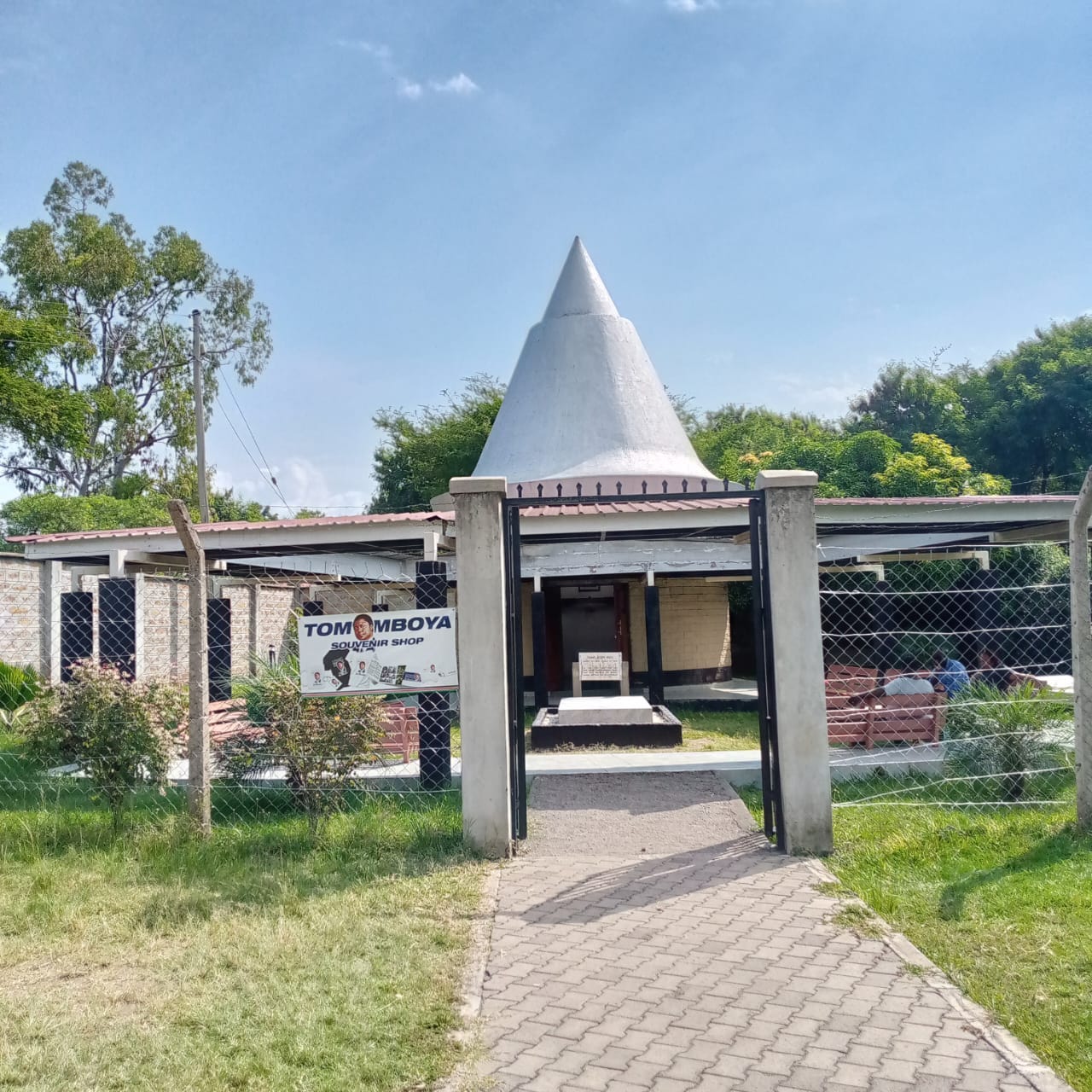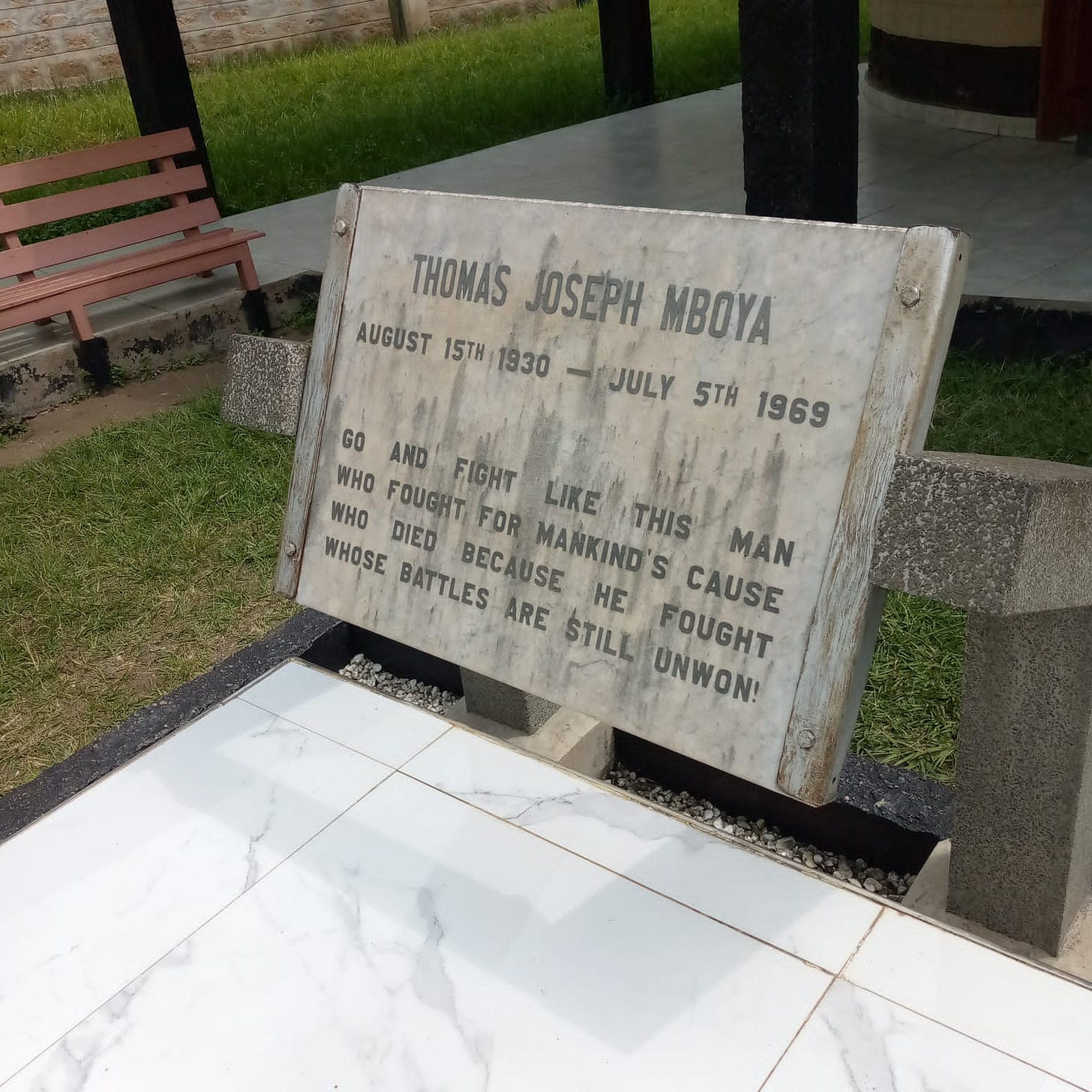Tom Mboya: Remembering the man they shot on Government Road
The subsequent erasure of his role from Kenya’s official historical narrative, speak to a broader politics of forgetting.
On a day like today, July 11, Tom Mboya was laid to rest on Rusinga Island—an isolated, rural outpost far removed from the vibrant, cosmopolitan world he inhabited in life. Mboya was not just a national figure; he was an international statesman—young, ambitious, and deeply embedded in global networks that linked Africa to the civil rights movement in the United States, pan-Africanist struggles across the continent, and post-colonial debates at the heart of the Cold War. Yet in death, he was buried in a place inaccessible not only geographically but symbolically—cut off from the urban political life and global admiration that once surrounded him.
Even in this remote resting place, one admirer followed him across continents: William Scheinman, an American ally and benefactor who had supported Mboya’s Airlift initiative and broader vision for African self-determination, lies buried beside him. The story of their resting place captures both the intimate bonds of Black internationalism and the tragedy of how
What remains most striking is not simply the silence around Mboya’s tomb, but the absence of any meaningful institutional legacy in the space surrounding it. There is no Mboya Institute, no research library, no active archive on Rusinga Island—no educational institution with his archives in Kenya to anchor his memory in the present or to inspire future generations from the soil of his final repose. This absence is symptomatic of a deeper neglect. One would expect the Tom Mboya University to have such archives. It doesnt.
Tom Mboya was assassinated on July 5, 1969, in broad daylight on Nairobi’s Government Road (now Moi Avenue), a few steps from the heart of Kenya’s political power. His killing sent shockwaves across the nation and the world. Mboya was only 38. At the time, he was widely viewed as the heir apparent to President Jomo Kenyatta and a symbol of modern, technocratic leadership in post-independence Africa. His death ignited immediate and widespread unrest, particularly in western Kenya, where thousands grieved what they saw not just as a personal loss but a political betrayal. Despite the conviction of a lone gunman, Nahashon Isaac Njenga Njoroge, many suspected a broader conspiracy. The trial revealed little about who ordered the hit or what the motives were. His assassination was not just a political act of violence; it marked the end of a pluralist vision for Kenya's future and the consolidation of ethnicized, authoritarian rule.
Instead of being preserved within a Kenyan context, much of Mboya’s archival legacy is housed abroad—at an American university—and what remains locally is fragmented: scattered between the Kenya National Archives in Nairobi and files at Britain’s Kew Gardens. This diaspora of memory ensures that the archive is, for most Kenyans, out of reach—geographically, institutionally, and symbolically.
.
As the political scientist David Goldsworthy poignantly observed in his biography, Tom Mboya: The Man Kenya Wanted to Forget, Mboya's death marked not only the end of a promising political career but the deliberate erosion of a public legacy. Mboya's modernist vision of a meritocratic, inclusive, and internationally oriented Kenya came into sharp conflict with the increasingly insular, centralized, and ethnically divisive politics of the post-independence state. His assassination in 1969, and the subsequent erasure of his role from Kenya’s official historical narrative, speak to a broader politics of forgetting.
To forget Mboya is to forget an alternative future Kenya might have taken—one that valued policy over patronage, planning over populism, and internationalism over insularity. The neglect of his tomb and the scattering of his papers are not just administrative failures. They reflect the discomfort of the Kenyan political elite with the memory of a man who stood for a different model of leadership—intellectually bold, administratively competent, and globally connected.
Mboya’s grave on Rusinga thus becomes a symbol—not just of death, but of disconnection. It reminds us that political memory does not endure on charisma alone. It needs institutions, stewardship, and political will. The absence of these has left a gaping hole in Kenya’s national narrative. Recovering Mboya’s legacy requires not only the repatriation and consolidation of his archives but also a broader reckoning with the paths not taken in the nation’s history.






Your writing is always succinct, detailed, brilliant and just pure bliss; even while covering maudlin topics
Excellent update of Tom Mboya, the Kenyan, Kenya decided to forget.